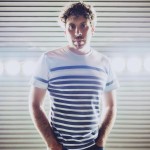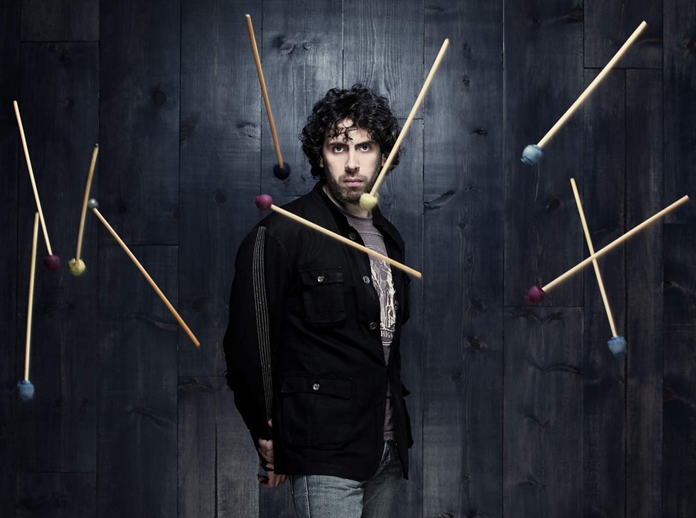An interview with Nick Mancini with Joanne Kee for Jazz Australia
New York musician Nick Mancini visits Australia. Vibraphonist and composer Nick began his professional career as a drummer, at the age of 15 graduating from Manhattan School of Music with a masters degree in jazz performance. On the cutting edge of the creative music scene in LA he has performed and recorded with such diverse luminaries as Arturo Sandoval, Charles Fambrough, Harvey Mason, Marvin “Smitty” Smith, Peter Erskine, Poncho Sanchez, Kenny Werner, New York Voices and Jennifer Holliday to name a few; and at notable venues such as The World Famous Apollo Theater; Showtime at the Apollo and virtually every jazz venue in Los Angeles.

JK: How did you first get interested in playing music and what were your early influences?
NM: My earliest influences were my older brother and older sister, Frank and Joyce. Frank played bass and guitar in rock bands and Joyce played just about any instrument under the sun. My brother was responsible for getting me my first drum set when I was about 13 and he would come home and we would jam together and he would teach me Rush songs and Joyce would sit me down at the piano and teach me little tunes – she taught me the left hand part to Heart and Soul and we would play her own jazzy arrangement of it for our family members.
More seriously, early influences would be Rush, Led Zeppelin, The Police, Iron Maiden and then this whole adult contemporary thing that was playing on my parents radio at home – artists like Roberta Flack and Lionel Richie. In the latter years of high school a friend gave me Dave Weckl’s Master Plan and that was when I realised that there was real music out there.
JK:You began playing drums professionally at 15 – how did you make the transition to playing the vibraphone?
NM:When I started music school at college level I had to abandon my drum set aspirations to pursue the orchestral percussion regiment that I was learning. This was where I was exposed to the vibes and around the corner from my school was a club where they held a jam session on Thursday nights. I started going there and that was where I heard real jazz performed live. After about a year of listening I decided I would start bringing the vibes with me and sit in and that was pretty much the turning point – I was 19 I guess. I had never touched a vibraphone or any mallet instrument prior to college.
JK:What was it about the instrument that first captured your imagination?
NM:I had never heard anything quite like it before and I was learning piano at the same time and I thought it was so brilliant that I could play piano with the same physical approach as playing drums. It seemed to marry those two worlds perfectly. Somebody gave me a Milt Jackson record, Bags and Trane, and that was where I first heard the vibes in jazz – if you can’t fall in love with the vibes after hearing Milt Jackson, then you can’t fall in love with the vibes.
JK:To the layman, the vibraphone looks an incredibly difficult instrument to master – has that been your experience?
NM:Yes. That’s a very subjective question because I would just say that in the early stages of learning the instrument I found myself having to put in a LOT of hours. Now that I’ve been playing for over 20 years my focus is less on mastering the instrument and more on mastering my ability to express myself through the instrument.
JK:Who are the other great vibes players who have influenced you in your career.
NM: Well Milt Jackson was obviously the first, and then Mike Mainieri, Steve Nelson, Victor Feldman, Dave Samuels, Cal Tjader, Red Norvo and Dave Pike. Joe Locke was my teacher at the Manhattan School of Music, so he definitely influenced in those years of my study.
JK: Tell us about your work as a composer and the direction in which you see yourself heading?
NM: I started writing in the second year of my undergraduate degree and I kind of knew immediately at that moment in time that I wanted to compose my own music, and it soon became obvious to me that the jazz musicians who are most successful nowadays are the ones who perform their original material. It not only came out of an artistic desire but also from a professional necessity I suppose. I’ve probably composed well over 100 pieces of music by now ranging from straight ahead jazz lead sheets to fully scored big band charts but I enjoy working most in the small chamber jazz style. Most recently I actually arranged a bunch of my tunes for an ensemble of piano, bass, three percussionists, vibes, viola, flute, three trombones and French horn – this was performed this past June at the Blue Whale, LA’s premier venue for creative music.
JK: You have recorded with some of the most respected names in jazz – who really stands out?
NM: Honestly the people that I feel stand out the most are people like Peter Erskine, Arturo Sandoval, Bob Hirst. But also less well-known players like Nate Wood from Kneebody are always inspirational.
JK: What brings you to Australia and what can we expect at your performance at Foundry 616 in Sydney?
NM: I have always had my eyes on Australia out of personal interest and curiosity in the land but logistically I was afforded the opportunity to be here via the Ted Atkatz Percussion Seminar as a faculty member, which was held in Adelaide earlier this month. As soon as I knew I was going to be here I contacted my good friend Callum Moncrieff and the wheels were set in motion…literally, we drove from Adelaide to Melbourne and Melbourne to Sydney.
For the gig at the Foundry 616 I will be performing with one of my favourite constellations of instruments, which is the Hammond B3 Organ, drums and vibes. We are performing material from my recent release, Impulse, such as Pure Imagination, Do You Know the Way To San Jose and other popular covers and a healthy dose of original material.
FOUNDRY 616
Tues 12 Jan – Nick Mancini Trio – (USA/Aus)
Nick Mancini – Vibraphone/Darren Heinrich – Hammond Organ
Callum Moncrieff – Drums and Percussion
INFO HERE














